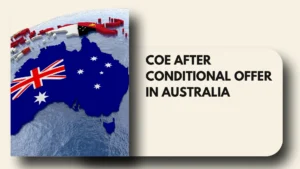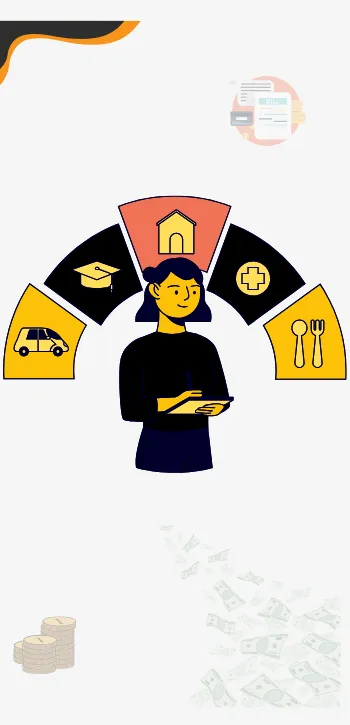- The I-20 form is an official document issued by your U.S. university that confirms your eligibility for an F-1 student visa and outlines your study program details.
- The SEVIS fee costs $350 (₹31,000) and must be paid online before your visa interview appointment.
- Your I-20 contains your unique SEVIS identification number that tracks your student status throughout your entire time studying in the US.

Planning to study in the United States? Two essential elements will shape your journey: the I-20 form and the SEVIS fee. These documents form the foundation of your F-1 student visa application and arrival in America.
In this blog, we will break down everything you need to know about obtaining your I-20, paying the SEVIS fee, and preparing for your US education journey.
What is an I-20 Form?
The I-20 is your official Certificate of Eligibility for Nonimmigrant Student Status issued by your university’s Designated School Official (DSO) after you get accepted into a Student and Exchange Visitor Program (SEVP)-certified institution. This three-page document confirms your admission and serves as proof of your F-1 student status.
The I-20 lists your programme start date, allowing you to enter the United States up to 30 days before your course begins. You cannot apply for an F-1 visa without this form, making it the first major milestone after receiving your university acceptance letter. The form includes a unique SEVIS identification number that tracks your status throughout your studies.
Key Information on Your I-20 Form
Your I-20 form contains specific details that immigration officials and university administrators will reference throughout your academic journey. Understanding each section helps you stay compliant with US immigration regulations.
Your I-20 includes the following information:
- Personal biographical information including various names, countries of birth and citizenship, and date of birth
- School information such as school name, address, school SEVIS code, and name of the Designated School Official
- Programme details including programme name, education level, normal programme length, start and end date, and English proficiency
- Financial information for the first year of studies, with one column for estimated funding costs and another column for funding sources
You and your DSO must both sign the Form I-20. If you are under age 18, your parents must sign the Form I-20 for you. Keep this document safe as you will need it at multiple checkpoints from your visa interview to airport immigration.
How to Obtain Your I-20 Form
Receiving your I-20 begins with accepting your university offer and submitting required financial documentation.
- Start by confirming your enrollment with the university and paying any requested deposits.
- Next, submit proof of financial support showing you can cover tuition and living expenses for at least one academic year. Bank statements, scholarship letters, or education loan sanctions work as valid proof.
- The university’s international student office collects necessary financial and identification documentation, which is entered into SEVIS by a DSO.
- SEVIS processes the information to produce the I-20, which is printed and signed by a DSO, then delivered to the incoming student.
What is the SEVIS Fee?
The SEVIS Fee is a mandatory $350 (₹31,000) payment for all F-1 international students entering the U.S. It funds the Student and Exchange Visitor Information System, which tracks and manages student data for immigration compliance. You must pay the I-901 SEVIS Fee after receiving your Form I-20 and before your visa interview; it’s separate from your visa and tuition fees.
SEVIS Fee Payment Process
Paying your SEVIS fee follows a simple online procedure with an average completion time of five minutes. Visit the official FMJfee.com website to complete your payment using your I-20 information.
To pay your SEVIS fee, you will need:
- Your SEVIS identification number as listed on the Form I-20
- Name, address, date of birth and email address
- Country of birth and country of citizenship
- School code as listed on the Form I-20
- Valid payment method (credit card, debit card, or electronic bank transfer)
Create an account on FMJfee.com, enter your information accurately, and submit payment. The portal generates an instant receipt that you must print and carry to your visa interview. Keep multiple copies of your SEVIS payment receipt as you will need them for your visa appointment and port of entry.
I-20 vs DS-160: Understanding the Difference
Students often confuse the I-20 with the DS-160, but these serve distinct purposes in your visa application.
| Aspect | Form I-20 | Form DS-160 |
|---|---|---|
| Issued By | University’s Designated School Official (DSO) | U.S. Department of State |
| Purpose | Confirms your admission and eligibility for F-1 student status | Serves as your online visa application form for the F-1 visa |
| When You Get It | After university admission and submitting financial documents | After receiving your I-20 and paying the SEVIS Fee |
| What It Includes | University details, program info, financial proof, and SEVIS ID | Personal, educational, travel, and security information |
| Used For | Proving your student status and program details | Applying for your F-1 visa and scheduling your visa interview |
| Submission Mode | Issued as a PDF document (to print and carry) | Completed and submitted online on the U.S. visa portal |
| At Visa Interview | Shows your education and financial eligibility | Used by the consulate to process your visa request |
Common I-20 and SEVIS Mistakes to Avoid
Small errors with your I-20 or SEVIS fee can create significant delays in your visa process. Being aware of common pitfalls helps you avoid unnecessary complications.
Common mistakes students make:
- Failing to verify I-20 information immediately upon receipt (spelling mistakes in name, incorrect birth dates, or wrong programme details)
- Delaying SEVIS fee payment until days before visa interview
- Losing I-20 or SEVIS receipt without keeping backup copies
- Travelling internationally without valid travel signatures on page two
- Not updating personal information changes with DSO within 10 days
Review every line of your I-20 carefully and contact your DSO immediately if you spot errors. Pay your SEVIS fee promptly after receiving your I-20 to maintain flexibility in scheduling your interview.
Key Takeaways
The I-20 form and SEVIS fee are non-negotiable requirements for your F-1 student visa journey. Your university’s Designated School Official issues the I-20 after you submit financial proof covering one academic year, confirming your admission and eligibility for student status. This document includes your unique SEVIS identification number and allows US entry up to 30 days before your programme starts.
The $350 (₹31,000) SEVIS fee must be paid online before your visa interview. This one-time payment funds the Student and Exchange Visitor Information System that monitors your status throughout your studies. Print multiple copies of your SEVIS receipt as you’ll need them for your visa appointment and airport immigration.
AdmitX simplifies your US study abroad journey with expert guidance at every stage. Our services include:
- University Selection Guidance
- SOP Review
- Study-Abroad Document Templates
- Free IELTS Bootcamp Course
- Scholarship Assistance
- Visa Support Services
And much more!
Book your FREE study abroad counselling session with our experts today!
FAQs
What is an I-20 form?
The I-20 is your official Certificate of Eligibility for Nonimmigrant Student Status issued by your university’s Designated School Official after admission to an SEVP-certified institution.
How much is the SEVIS fee for F-1 students in 2025?
The SEVIS fee is $350 (₹31,000) for F-1 students.
When can I enter the US with my I-20?
You can enter the United States up to 30 days before your programme start date listed on your I-20.
Where do I pay the SEVIS fee?
You pay the SEVIS fee online at the official FMJfee.com website.
What's the difference between I-20 and DS-160?
The I-20 is your university-issued eligibility certificate, whilst the DS-160 is the US government’s online visa application form.
Can I work in the US with an F-1 visa?
F-1 students can work on-campus up to 20 hours per week during term and full-time during breaks after the first academic year.
How long does it take to receive an I-20 after admission?
Universities typically issue the I-20 within 2-4 weeks after receiving your financial documents and enrollment confirmation.
Can I transfer to another university with my existing I-20?
No, your new university must issue a new I-20 and complete a SEVIS transfer process.
Do I need to pay the SEVIS fee again if my visa is denied?
No, the SEVIS fee remains valid for the same SEVIS record and school.
What is Optional Practical Training (OPT) for F-1 students?
OPT allows F-1 students to work in their field of study for up to 12 months after graduation, with STEM degrees eligible for a 24-month extension.
If you are an aspirant looking to study at your dream university, book an appointment with AdmitX today and start your applications early to avail yourself of all the benefits.
















